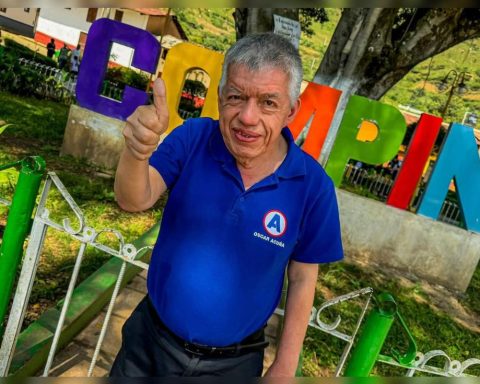A 57-year-old woman, who had been blind since she was 16 due to septicemia, began to distinguish shapes and points of light in her visual field by means of a mechanism by which the area of the brain responsible for vision was stimulated with electrodes, and where knowing how to quantify the emotion of that person when they began to see played a preponderant role.
Researcher Fernando Farfán, doctor in Biological Sciences and director of the Biomedical Engineering area of the National University of Tucumán (UNT), participated in the development of the project, who joined the research led by the Miguel Hernández de Elche University of Spain, through a grant from Conicet through the “Young Researchers” program.
Farfán, who has been a teacher at the UNT for 13 years, told Télam that “this is the first time this experiment has been carried out in humans” and that in January or February of next year “it will be repeated with another blind person”.
The experience, which lasted between April and October of this year, involved Bernardeta Gómez, who went blind at 16 due to septicemia – an overwhelming and life-threatening response of the body to an infection and requires rapid intervention – but with the help from a brain implant he turned out to be able to distinguish simple shapes and letters.
“Bernardeta did not have any sensation of light in any of her eyes, she did have consciousness and knew what colors are. An electrode was inserted into the cerebral cortex and began to be stimulated through a lens that made a retina and that it was placed externally together with a microprocessor, “Farfán explained.
The researcher revealed that, as the lens received that light information, “it began to send previously decoded signals to the electrode, and the stronger the signal, the more light points or ‘phosphenes’ the person began to visualize.”
This whole process took six months. In the first three, Bernardeta did not perceive visual cues, but, as the brain was retrained, the light points began to take on the shapes of lines and she began to see the rounded or square shapes, as well as some letters.
“The more impulses or more intense the signal that is sent to the electrode, the person will be able to see more complex shapes such as a chair. But the issue is that sending greater impulses can damage an artery because it is an invasive procedure”, Farfán indicated.
The researcher explained that when this clinical test was approved, “it was agreed that by removing the electrode, the person will be left as he was before, so the device has not yet been developed to remain permanently.”
This same test, other universities in the Netherlands and the United States, perform it on monkeys and there animals perceive shapes and objects more clearly, but transferring it to the human being is much more complex, because not only is the compatibility of your nervous system at stake so as not to reject the electrode but also their emotions also play.
And that is how Farfán joined the team of researchers since the biologist conducts studies at the University of Tucumán to quantify those emotions, which makes it possible to measure how effective technological development is in itself and how much is determined by the desire and emotions of women to see again.
“There were times when Bernardeta he told us what he saw the luminous points but the stimulus that was being given was very low, so it was impossible for him to visualize any point. That was my task and This is where a very important field of medicine opens up, which is neuroscience.“, highlighted the researcher.
Farfán indicated that the investigation in the patient went through knowing what the decision-making process is like, how stress and anxiety intervene in the consciousness of an individual, and how these emotions influence the cure or the appearance of diseases.
This is called “spontaneous perceptions” because they are not regulated by a medical mechanism.
“Bernardeta really wanted to participate and perceived these points because she had some emotional process of enthusiasm, which does not mean that the response was triggered. My mission was to verify that all the responses she gave were caused by the mechanism,” he said. the tucumano teacher.
And he explained that “we have proposed new experimental protocols that allow quantifying the levels of consciousness that the person has, in this case, about that phosphene, based on a psychophysical and psychology theory of consciousness. Then another field opens, no longer it is more if the person sees or does not see, there are emotional processes in between”
In Argentina, the teaching of biomedicine, biomedical engineering and the computational area that surrounds them is gaining more and more followers in the field of medicine and “has nothing to envy the training of human resources from other parts of the world”, assured the Conicet researcher.
And he explained that what differs from other countries “is the apparatus used since a mechanism of this type comes out above 700,000 euros.”
The teacher is convinced that the interpretation of the signals in the tests, the information processing and the validation protocols could be designed and evaluated in Argentina.
And he considered scientific cooperation with different research groups -such as that of Spain- key, which are at the forefront of knowledge and can contribute to the growth of local science.


















